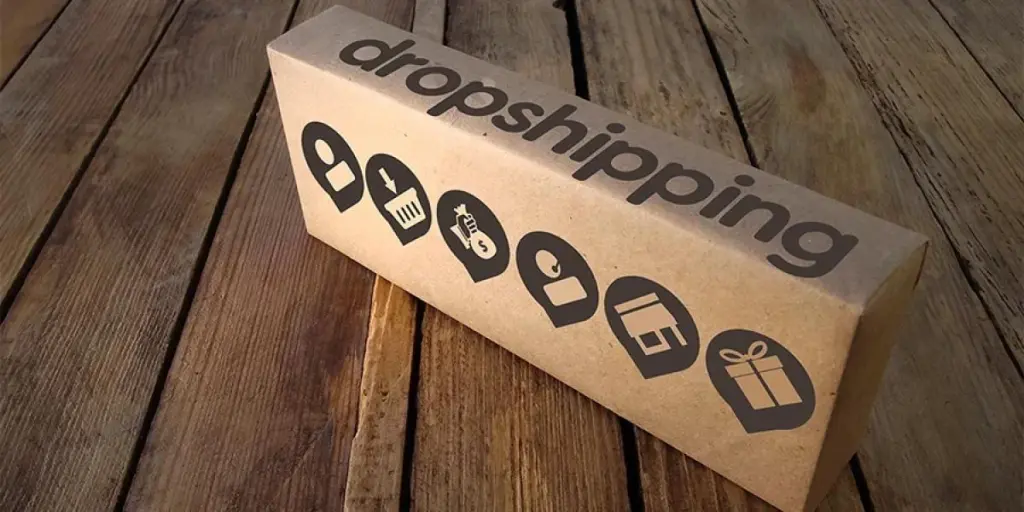Want to enter online retail without having to first splash out on an expensive inventory? Then dropshipping may be the ideal option—offering profit margins averaging 15% to 20% of each item’s selling price, without having to pay anything before your sale goes through.
This means that for dropshipping there’s a low risk of losing since dropshippers don’t have to invest in warehousing or spend time fulfilling orders.
So, how can sellers start a dropshipping business?
The short answer: Have a $100 to $500 initial investment fee for marketing and platform fees/marketing, a computer with the internet, and research/setup time. That’s it!
This article will provide nine trusted steps new sellers can follow to start a successful dropshipping business in 2024.
Table of Contents
9 steps to kickstart your dropshipping business
Rounding up
9 steps to kickstart your dropshipping business
1. Create a business idea and do the market research

Just because dropshipping is an easy way to enter the retail market doesn’t mean sellers don’t need a plan. New dropshippers must first develop a business concept their brand, content, and product collection will follow.
Pro tip: Niche products are great for dropshippers as they can make marketing more effective, help rank websites higher on topic-specific searches, and motivate conversion.
Got the business idea down? It’s time to do product research—which helps dropshippers identify products with the most sales, checking trending products and categories that draw more traction.
Here are some metrics to help sellers get started:
Sales volume
Identifying products with huge demand is the key to making sales in dropshipping, and sellers can use the following tools to identify items with high sales volumes:
- Amazon’s Best Sellers Lists (see the best-selling products in each category)
- Shopify’s list of trending products (offers frequently updated resources for trending products globally)
Keyword search volume
Keyword data provides insight into product searches done by potential consumers, indicating the product demand and potential success for the search term.
The following tools can help conduct effective keyword data research:
- Google Ads Keyword Planner (offers data on keyword search frequency and other helpful features to gauge competitiveness and recommendations)
- Ahrefs Keyword Explorer (offers accurate search volume, advanced metrics such as CPC, bounce rate, and parent topics, as well as location performance, and competitor rankings)
Trend data
Next, see how the keyword trends. This data will indicate if keywords are temporary hot-sellers or long-term trenders. Google Trends is one free tool dropshippers can use to get relevant trend data.
2. Gain insight from established competitors
Having successful competitors who are already profiting from the market can be both a good and bad thing depending on how one looks at it. New sellers can use them to extract data on what works in their niche, helping to construct better plans for success.
However, know that only 10% to 20% of dropshipping startups succeed because of high competition, so avoid jumping into oversaturated markets for a higher success chance.
Here are three ways to effectively gain insight from competitors:
- Look at search engine results pages (SERPS)
Search selected keywords on Google and examine websites (images and shopping results included) with high rankings. Then, take notes of their product range, shipping strategy, site layout, item descriptions, advertisements, and pricing.
- Jump on social media
Don’t sleep on Facebook, Twitter, Instagram, and TikTok—they’re effective marketing platforms that get astronomical attention and funding from online stores.
Do some research to find the competition’s accounts and see how they run it. Also, follow their accounts to gain up-to-date information of their products and strategies.
- Sign up for mailing lists
Subscribe to the competition’s email list to receive crucial information. Things to watch out for include the email’s frequencies, promotion models, and copywriting tone.
Pro tip: Avoid reusing the competition’s text or photos. Google’s algorithm will punish sellers that copy unwisely. So, seek inspiration, and do not plagiarize.
3. Give the business concept a brand

Conceptualizing a brand that relates to potential or existing consumers is key—as it’s a big step towards success in dropshipping, from the beginning. The business should have a name that represents the products planned to sell or the customers they’re catering to.
More importantly, the brand name should be easy to spell, memorable, and brief. New sellers finding it difficult to set a brand name can use Shopify’s business name generators for some cool ideas.
Check if the name is available
Unfortunately, choosing a catchy name is not the end of this process. Sellers also have to ensure the name is up for grabs, which can be done by checking if it has a free domain name or if the social media username is available.
Choosing an already taken business name can cause serious legal trouble in the future—or make marketing harder because of confusion. When sellers decide on a name, they can check domain providers like GoDaddy, Google, or Bluehost to ensure what they want is unique and available.
Set the brand’s visuals
With the name set and ready to go, the next thing to decide on to bring the concept to life is the following:
- Color scheme
- A logo
- Typography (fonts)
New sellers with an artistic side or an interest in marketing will love this step. But sellers can hire professionals on sites like Upwork to develop amazing concepts if it’s not something they love doing.
4. Know who to source products from
Sourcing products is one aspect that sucks up most of the time and has the largest impact on profits.
Here are some factors worth considering when searching for dropshipping products and suppliers:
- Item popularity: Most dropshipping marketplaces allow easy access to an item’s previous sales volume. While selling less popular products effectively is possible, it’s always best to go for hot sellers.
- Profitability: Since dropshipping doesn’t require an inventory, sellers only handle shipping costs and processing fees. But there are two ways to gain from this. New sellers can make more profitable sales by increasing product prices or settle for more buyers by decreasing the markup.
- Item quality: Here’s where a reliable supplier is necessary. Sellers usually don’t have any control over their good’s quality. While they can order a sample, it’s too time-consuming for each potential offering.
Thankfully, new sellers can rely on sales numbers and marketplace supplier ratings to gauge the chosen item’s quality.
- Location: A successful dropshipping business relies on shipping costs and delivery speed—and this depends on the supplier’s location. Since many vendors operate in China, prioritize the ones offering fast, trackable services, like ePacket shipping.
- Supplier reliability: It’s hard for newbie dropshipping sellers to know a supplier’s reliability until they work with them. That’s why it’s important to use dropshipping marketplaces that display quality and trusted suppliers with high customer reviews on their front page—whilst allowing sellers to open disputes when they aren’t satisfied with their product quality.
- Return policy: This aspect differs according to the dropshipping marketplace. Some may only have a no-refund policy, so sellers must ensure the chosen supplier’s return policy and process fits their requirements.
Here are two ways new dropshipping businesses can source goods:
- Dropshipping marketplaces: The most ideal (and easiest) option for new dropshipping businesses. They can benefit from dropshipping automation, making it easy to build and operate a business. The best ones to focus on include Alibaba, AliExpress, DSers, U.S. Direct, and Modalyst.
- Direct sourcing from suppliers: For this method, new sellers can form a relationship with suppliers from dropshipping marketplaces. Or, they can source wholesale suppliers from ThomasNet, Private-label Sellers, and ImportGenius.
5. Determine the best strategy for the dropshipping website
Launching a dropshipping business requires a user-friendly e-commerce website to attract traffic. But before that, sellers will need to choose between product-focused or content-focused strategies.
Product-focused websites look like regular online storefronts, making them the easiest strategy for new sellers. It’s also a great strategy for dropshipping stores focusing on selling various goods and niches that don’t need prior knowledge, like socks and other easy essentials.
Note: Content can still help product-focused websites but through off site means, like YouTube channels and social media accounts.
On the other hand, some stores build their business around applicable content. It’s a great strategy for niches with engaged communities or products requiring prior knowledge, like musical instruments.
6. Choose the perfect e-commerce platform
A dropshipping website won’t be complete without payment processing features and shopping carts. That’s why new dropshipping sellers will need a one-stop shop e-commerce platform like Shopify that comes with inbuilt tools that handle everything from building the store online and marketing to accepting various payment options.
One can also use Amazon and other huge marketplaces (like Walmart and eBay), but they’re not as beginner-friendly. Also, these platforms have strict shipping deadlines, costly seller fees, and customer service requirements.
On the other hand, Volusion and WordPress/WooCommerce are other start-up-friendly options for selling dropshipping products.
7. Get the dropshipping website ready
It’s time to start building the website. Each e-commerce platform provides helpful tutorials on how to set things up. Some even offer customer support or free setup assistance.
After setting up the main page themes, sellers must focus on the following critical details:
- Product descriptions: Create unique production descriptions different from the manufacturers or suppliers. Using the same text may hurt the dropshipping website’s search ranking, so craft something unique.
- Payment processing: This aspect must be user-friendly, affordable, and secure. Some popular options to set on dropshipping websites include digital/mobile wallets (like Apple Pay), credit cards, debit cards, PayPal, and BNPL (buy now, pay later) payments.
- Shipping methods: High shipping fees at checkout are notorious for causing cart abandonment. So, sellers must determine the transportation choices they’ll offer, what shipping charges customers will pay, and how it will affect their profit margins—even though they won’t fulfill orders themselves.
- Customer service: Set up channels that make it easy for consumers to establish communication. They may need to modify their order, request returns, or make other inquiries.
So, establish at least one contact option on the website’s “Contact Us” page:
- Email address (avoid using personal emails)
- Phone support
- Contact forms
- Virtual live chat
- Return policy: Expect about 20% of consumers to request returns—it’s unavoidable with e-commerce businesses. As a dropshipping business, returns are not that simple. But here are ways sellers can handle it easily:
- Offer a replacement (let consumers keep the original item and receive a replacement for free).
- Offer a refund if consumers don’t want replacement items—but process it without requiring the original products. However, ask consumers for detailed descriptions or photos.
- Leave product returns to the consumers if the goods are too high-value. That way, they can return the product at their own expense.
Click here to get free return policy templates.
8. Set up the financial and legal aspects of the dropshipping business

Never start a business without handling the financial and legal aspects. Here’s what startups need to take care of:
Banking
First, separate personal banking accounts from business finances by setting up a business checking account. Also, ensure all revenue stays in this account and withdraw expenses to avoid difficult situations.
Business licenses
Don’t forget to obtain a local business license or permit. After that, sellers must regularly renew the licenses/permits to keep things running. However, dropshipping businesses may not need this requirement.
Sellers must research their state, county, and city regulations to determine if their products require permits and licenses.
Business structure
Then, choose a business structure for the dropshipping startup. There are three common business structures new sellers can use.
| Business structure | Description |
| Sole proprietorship | This structure applies to businesses registered in other states. It’s the simplest choice for dropshipping businesses. |
| Limited Liability Company (LLC) | This structure is a bit more complex to set up than sole proprietorship. It requires EIN, state filing, and annual reports. |
| C Corporation | While it’s more expensive and complex to set up, a C Corporation structure may be worth it if sellers want outside investment or predict high growth. |
9. Do a lot of marketing
Last but not the least: “Do a lot of marketing!”
Don’t just sit there and watch. After launching the dropshipping site, engage in extensive marketing to attract shoppers. Use any (or all) of the following marketing tactics to get orders pouring in:
- Social media marketing: Promote stores through shoppable posts, running social media campaigns, and audience engagement on Facebook, Instagram, TikTok, Twitter, and Pinterest.
- Email marketing: Build an email list and send regular updates about new collections, product highlights, and sales/promotions.
- Content marketing: Both product- and content-focused approaches need some content marketing to build a long-term traffic stream via blogging, podcasts, videos, etc.
- Influencer marketing: Another social media approach that’s more effective for reaching target audiences.
- Paid ads: Regular pay-per-click ads can easily boost store visibility. Also engage in Google Ads, Facebook Ads, and Facebook Sponsored Posts.
- SEO and link building: Use this strategy to rank websites higher on search engine results and gain more visibility.
Rounding up
With the nine steps listed here, it’s clear that newbie sellers will have to go above and beyond to achieve success with dropshipping—which means managing orders, handling customer service, accounting, making improvements from performance analysis, and much more.
According to Shopify, most dropshippers reach profitability within six to twelve months—depending on how much effort they are willing to put in. And it may take about twelve months or more before the business can fully replace a full-time job.
The initial investment may seem pricey, but it’s worth it when profits start rolling in. That’s why newbies must do everything to ensure their marketing is top-notch. And the nine steps listed in this article will put you on the right track when starting your dropshipping store in 2024.




